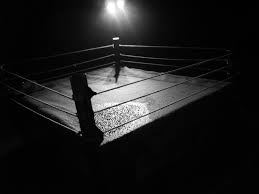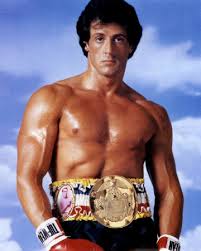Have Your Own Movie Star Transformation
By Spencer Bohm-

It is not unusual for actors and actresses to transform their normal physical appearance for a specific role. Some, such as Renee Zellweger in Bridget Jones’ Diary, actually gain weight to heighten their credibility as the character. Others have dieted considerably to fit a role or a particular character like Natalie Portman in Black Swan of Christian Bale for, well, almost every role he’s done.
Many have “bulked up” for particular roles. Five recent examples of this type of transformation have been Bradley Cooper, Jake Gyllenhaal, Sylvester Stallone, Mark Wahlberg and Hugh Jackman.
Bradley Cooper for American Sniper
????In order to portray the real-life sniper, Chris Kyle, Bradley Cooper needed to add strength and increase his weight from 185 to 225 pounds. Not only that but he had to look like, and be, actually strong, not just cut in a way the cameras like. For him it meant a grueling two-a-day workout plan (four hours in total) with his trainer Jason Walsh. The main focus was on building a solid foundation on Cooper, this meant deadlifts and squats in the A.M. and traditional weight training in the P.M. using body weight at first and then building up from there. To fuel these intense workouts Cooper claims to have ate every 55 minutes and consumed around 8,000 calories a day. He also
Jake Gyllenhaal in Southpaw
????To be a convincing boxer, Jake Gyllenhaal needed to “muscle up” substantially. In a prior role, he had lost 30 pounds, but now he needed to gain weight, mostly muscle. He also learn to box convincingly. The target was for him to look and move like a real middleweight fighter as opposed to a weight lifter. He spent time training Floyd Mayweather’s gym in Las Vegas and Church Gym in New York so he could not only get fit, but also understand the boxing world better.
??
??The regimen was designed for him to be lean, quick and fast. The twice a day, seven day a week workouts featured, in addition to many rounds in the ring, regular 8 mile runs, pull-ups, core work, and squats. His regimen was so intense that it reportedly cost him a girlfriend.
Sylvester Stallone for the Rocky movies
????Stallone has been training off and on since 1976 for his Rocky and Rambo movies. Most particularly, it was for the Rocky 3 movie when Stallone began to work to seriously to shape up his physique where he got so fit he was down to 2.8% bodyfat. And, at age 60, for the revival of his Rocky role in Rocky Balboa (more details on how to watch all the films here) , he reshaped his body with two very long workouts per day. However he’s quick to warn against pushing your body too far telling Muscle and Fitness “Over the years, my biggest flaw was overtraining. In the gym six days a week, doing more sit-ups at night…my body was in a constant state of breakdown. Now I focus on a variety of exercises, working out three times a week for 90 minutes per session. I really feel good–much stronger than I’ve ever felt, actually. Something’s working.”
????Diet has always been an important part of Stallone’s regime, usually restricting himself to virtually an all-protein diet while in serious training. For average times in his life he claims “I follow a high-protein diet: Anything with a face, that’s what I eat, with something green next to it”.
Mark Wahlberg for The Fighter
????Wahlberg trained to be a boxer for his role as Mickey Ward, a real life fighter. The mission was to make Wahlberg look, move and act like a professional boxer. His workouts were extensive, though geared to improving his boxing skills and, in doing so, to trim down and muscle up for realism. His regimen included two a day workouts, six days a week that featured boxing in the A.M. and a rotation of spot training and basketball.
?
???The boxing workout included sets of shadow boxing, heavy bag, focus pads for aim and combinations, and the speed bag for timing and speed. Shifting to his strength workout, Mark worked on his legs, back and biceps with leg extensions, squats, chin-ups, and various curls and crunches. Next came chest, shoulders and triceps with extensive and crunches.
You Can Do It Too
????All of these actors achieved a goal of improving their bodies for a specific role. These were essentially normal men in reasonable shape who, with motivation and commitment to succeed driven by a contract and career, were able to transform their bodies to achieve their goals. Some of their programs may be considered extreme, but usually because of the limited time to achieve their goals.
?
???You can clearly see the importance that diet plays in all of these mens plans. You can train and workout until the cows come home but if you’re gonna enjoy a few beers and a plate of nachos afterwards you’re back to where you started. Sure, it seems like common sense but you’d be surprised how many people overestimate the number of calories they burn in a workout and overindulge using that false information.
????The one similar vein in all of the workouts is variety and changing things up. This can be trading a lifting session for a long run or swapping your free weights for old fashion body weight. Repeating the same exercises you’ve always done will get you the same results you’ve always gotten. So, if you’re in a rut take a cue from these men and mix things up.
